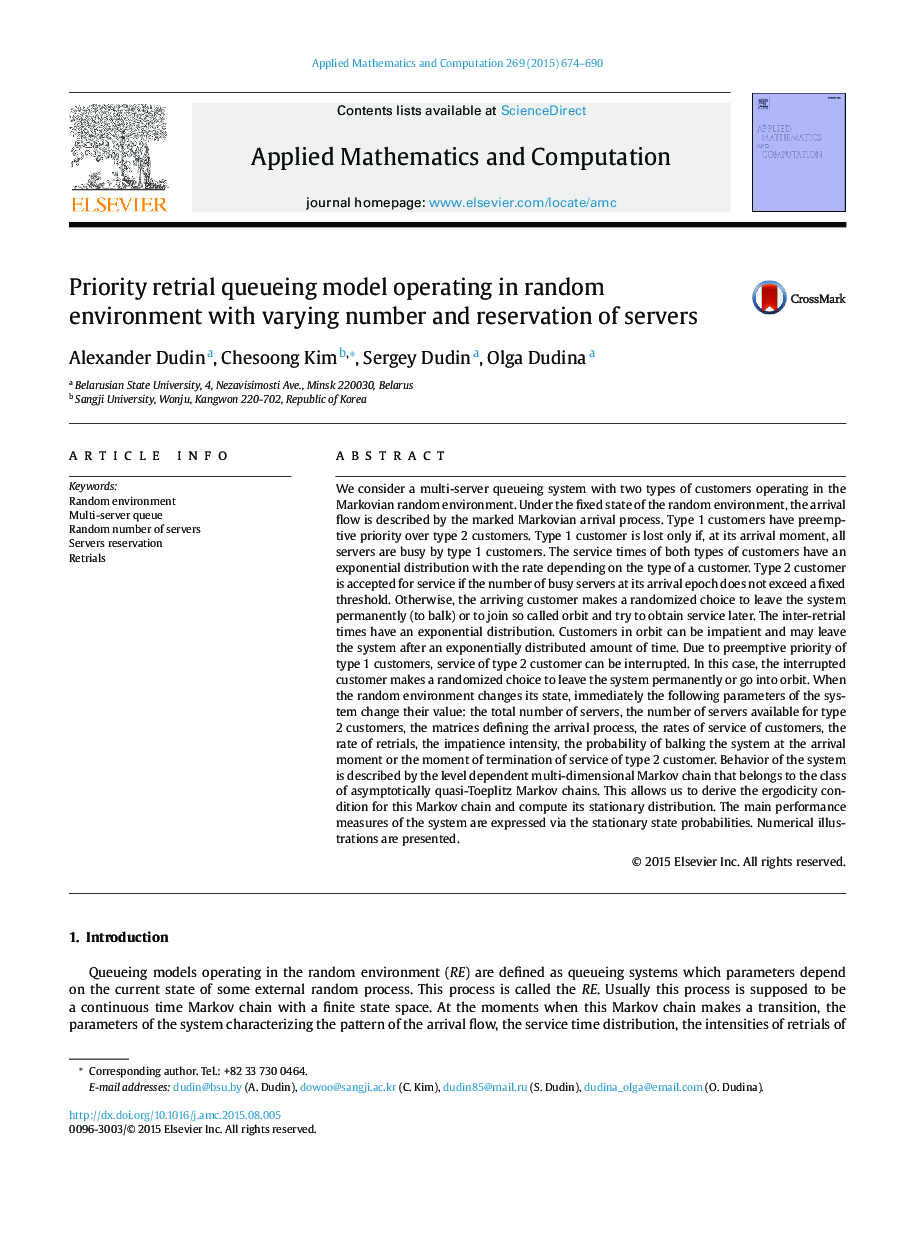| Article ID | Journal | Published Year | Pages | File Type |
|---|---|---|---|---|
| 6420177 | Applied Mathematics and Computation | 2015 | 17 Pages |
We consider a multi-server queueing system with two types of customers operating in the Markovian random environment. Under the fixed state of the random environment, the arrival flow is described by the marked Markovian arrival process. Type 1 customers have preemptive priority over type 2 customers. Type 1 customer is lost only if, at its arrival moment, all servers are busy by type 1 customers. The service times of both types of customers have an exponential distribution with the rate depending on the type of a customer. Type 2 customer is accepted for service if the number of busy servers at its arrival epoch does not exceed a fixed threshold. Otherwise, the arriving customer makes a randomized choice to leave the system permanently (to balk) or to join so called orbit and try to obtain service later. The inter-retrial times have an exponential distribution. Customers in orbit can be impatient and may leave the system after an exponentially distributed amount of time. Due to preemptive priority of type 1 customers, service of type 2 customer can be interrupted. In this case, the interrupted customer makes a randomized choice to leave the system permanently or go into orbit. When the random environment changes its state, immediately the following parameters of the system change their value: the total number of servers, the number of servers available for type 2 customers, the matrices defining the arrival process, the rates of service of customers, the rate of retrials, the impatience intensity, the probability of balking the system at the arrival moment or the moment of termination of service of type 2 customer. Behavior of the system is described by the level dependent multi-dimensional Markov chain that belongs to the class of asymptotically quasi-Toeplitz Markov chains. This allows us to derive the ergodicity condition for this Markov chain and compute its stationary distribution. The main performance measures of the system are expressed via the stationary state probabilities. Numerical illustrations are presented.
